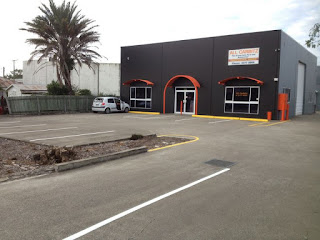The Interlining Industry's Warehouse Ownership Classification
Facing with the fierce competition within the global market, each manufacturer is putting every effort to develop its own competitive edge. this is often very true within the interlining industry. one among the aspects for an interlining supplier to realize competitive edge is to lowering costs while increasing efficiency. Whilst lowering the storage cost may be a means for an interlining supplier to specialise in . Before making a strategic getting to lower the storage cost, an interlining supplier is important to know the essential concept of warehouse ownership classification.
Warehouses within the manufacturing industries are generally
classified by the ownership. Under this concept , warehouses are often
classified as private warehouses, public warehouses and contract warehouses.
1. Private Warehouse
A private warehouse, as a kind of warehouse ownership classification,
is operated by the firms or organization that owning the products stored within
the facility. These firms or organizations could also be factories, trading
companies or wholesalers. The building of the warehouse are often owned or
leased. The juncture for a firm to make a decision whether to have or lease the
power is that the financial concern. Sometimes it's impossible to seek out a
correct warehouse to lease. Take an interlining supplier for example; the
storage racks or other physical nature during a leased building might not be
suitable for the storage for interlining products like woven interlining,
non-woven interlining and fusible interlining. Under this circumstance, design
and arrangement got to be taken place for construction. On the opposite hand,
at a specific connection for logistic purposes, a firm may have difficulties
find a warehouse for ownership.
The major benefits of a personal warehouse are
flexibilities, control, cost and a few intangible attributes. a personal
warehouse is more flexible than a public one, because the operating policies
and process are often adjusted to satisfy the special needs of a customer or
the merchandise itself. Also, an appropriate course of action are often taken
to satisfy specific requirements for logistic purposes.
Private warehouse offer stable control since the firm has
the only authority on warehouse management to optimize activities. for instance
, the control on warehouse operations for an interlining product like woven
interlining, non-woven interlining and fusible interlining can integrate with
the logistic operations of an interlining supplier.
Usually a personal warehouse is taken into account less
expensive . one among the explanations is that a personal warehouse is made
within the manufacturing base of a supplier; therefore, the fixed and variable
components could also be less than a public warehouse. Furthermore, a personal
warehouse isn't profitable to the owner of the power .
2. Public Warehouse
In contrast with a personal warehouse, a public warehouse as
another sort of warehouse ownership classification is operated independently by
a business to supply wide selection of for-hire services associated with
warehousing. Such warehouses are extensively utilized in the logistic systems
to scale back the availability chain costs. A public warehouse are often hired
for a brief or long-term, supported the policies of the power and therefore the
needs of the purchasers .
In a financial view, lower cost on warehousing may achieve
by hiring a public warehouse than owning a personal warehouse. The share
resources and economic scale during a public facility may end in lower
operational cost. Another advantage of public warehousing is that customers
like interlining supplier for woven interlining, non-woven interlining and
fusible interlining don't got to spend an enormous investment on the
facilities. Furthermore, a public warehouse allows the users to vary the amount
and sizes of warehouses easily to satisfy special demands.
Users during a same public warehouse may share scale
economies by the leverage of combined requirements from users. Such leverage
ranges fixed charge from to operating expense . Transportation cost can also be
leveraged during a public warehouse. for instance , a public facility can
arrange combined customer delivery consolidation, to deliver the woven
interlining products of the primary interlining supplier with the non-woven
interlining products of the second interlining supplier to an equivalent
destinations.
Because of its flexibility, scalability, services and
variable cost, public warehouses are popular by many firms. generally , a
public warehouse as a kind of warehouse ownership classification can design and
perform special services to satisfy customers' operational requirements.
3. Contract Warehouse
A contract warehouse, as a 3rd sort of warehouse ownership
classification, has the attributes of both private and public warehouses. A
contract warehouse also can be understood as a customized extension of a public
warehouse, which may be a long-term business arrangement to supply specific and
customised logistic services to the purchasers . it's also thought that a
contract warehouse may be a sort of business process outsourcing during a
logistic perspective. during this relationship, the client and therefore the
service supplier share risks concerning the warehousing operations.
In general, many companies tend to utilize a mixture of
personal , public and contract warehouses. Basic knowledge of the warehouse
ownership classification will function a managerial guide the way to develop a
warehouse deployment strategy. Such warehouse planning focuses on two aspects,
namely, 1) the amount of warehouses required and 2) the warehouse ownership
utilized in specific markets. the main target on these two aspects will create
warehouse segmentation for specific markets, which may provide more tailored
and focused logistic capabilities to customers.
For More Info:-

Comments
Post a Comment